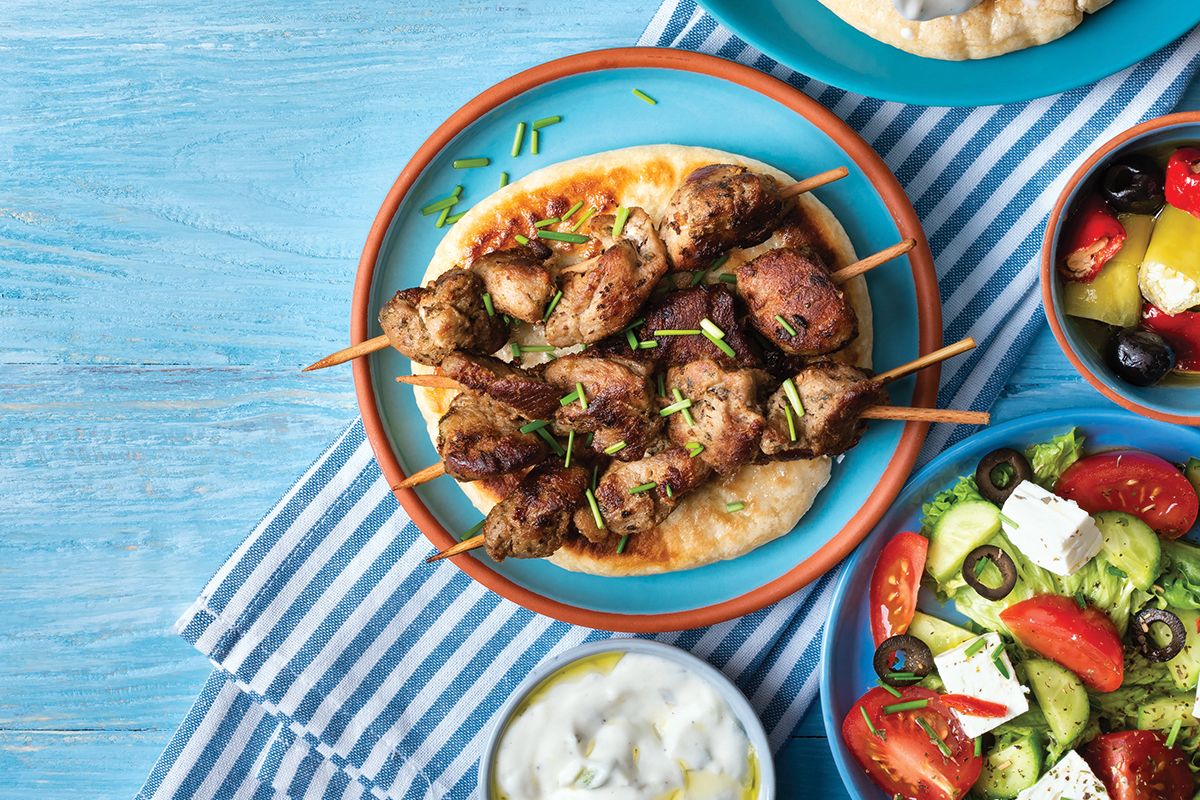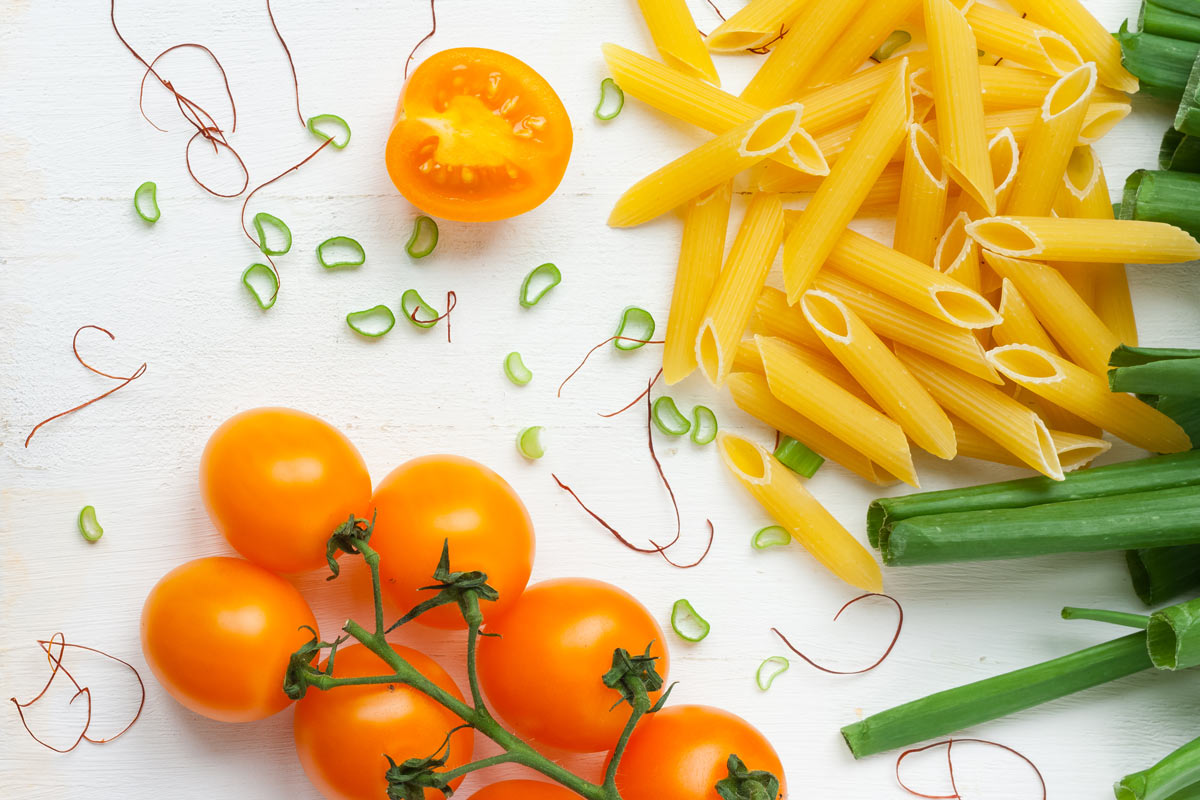Grilled Lamb Skewers With Tzatziki Recipe, Spotlight on Yogurt and Mint, and the Top Five Habits for Living Longer
I’m always surprised at how underappreciated lamb is in the US. Whether raised here or in Australia or New Zealand, it’s the red meat most likely to be produced under humane conditions, with so many of the herds being grass-fed. I invite you to try lamb (or try it again if earlier experiences have led you to shy away from it) with a simple yet savory preparation. I’m also sharing the latest findings on a wide variety of topics, from healthy dairy to the top five habits for living longer.
Grilled Lamb Skewers With Tzatziki
 Grilled Lamb Skewers With Tzatziki
Grilled Lamb Skewers With TzatzikiFew foods are as quick to cook and delicious as grilled lamb cubes. Known as arrosticini in the Abruzzo region of southern Italy, it’s one of the most beloved foods, served with olive oil-soaked bread that has also had a quick sear on the grill. In Greece, Turkey, and other countries around the Mediterranean as well as throughout the Middle East, lamb cubes are often called kebabs and slipped from skewer onto pita or another flatbread. No matter what country lays claim to them, adding a dollop of Greek-inspired tzatziki adds creamy zest to this succulent meat.
Ingredients
For the tzatziki:
- 1 cup whole milk Greek yogurt
- 1 tablespoon lemon juice
- 1 tablespoon extra virgin olive oil, plus more for drizzling
- 2 garlic cloves, finely minced
- 1/4 teaspoon sea salt
- 1 tablespoon chopped fresh dill
- 1 tablespoon chopped fresh mint
- 1 medium cucumber
For the lamb skewers:
- 1 1/2 pounds boneless lamb shoulder or leg, trimmed of any sinew and silver skin
- 2 tablespoons extra virgin olive oil, plus more for drizzling
- Coarse salt to taste
- 1 teaspoon fresh rosemary needles, chopped (optional)
Directions
Step 1
To make the tzatziki, in a large bowl, fold together the yogurt, lemon juice, olive oil, garlic, salt, dill, and mint. Grate the cucumber using the side of a box grater with large holes or in a food processor outfitted with the grating disc (I like to leave on the skin for the extra fiber and nutrients). Using a slotted spoon, transfer the grated cucumber onto three or four stacked paper towels or a clean kitchen towel, and roll it all up, squeezing out as much of the remaining water as possible to avoid diluting the tzatziki. Then fold the cucumber into the yogurt mixture. Taste and add more salt, pepper, and/or lemon juice as desired. Keep the tzatziki refrigerated until needed. Right before serving, drizzle the top with olive oil.
Step 2
To make the lamb, cut it into 1-inch cubes and transfer them to a bowl. Add 2 tablespoons of olive oil and season with salt and rosemary if using; toss to thoroughly coat the cubes. Thread the cubes onto skewers close together (sides touching). Light your grill and preheat to medium high. Arrange the skewers on the grill grate, working in batches if necessary. Grill until the lamb is cooked through and has picked up some color, about 1 to 2 minutes per side, depending on the heat of your fire. Transfer the skewers to a platter. Serve with coarse salt, olive oil to drizzle, the tzatziki, and your choice of bread.
Yields 4 appetizer servings

Healthy Ingredient Spotlight
What’s the “Best” Yogurt?
Tons of research has done little to settle the debate over whether it’s better to reach for full-fat, fat-free, or something in between when it comes to dairy. What we do know is that dairy has many important nutrients and that yogurt is especially good for you, thanks to its beneficial bacteria.
I like the way that a recent Consumer Reports article featuring Dariush Mozaffarian, MD, dean of the Friedman School of Nutrition Science and Policy at Tufts University in Boston, summed it up:If you’re eating one or two servings a day, it probably makes little difference whether it’s nonfat, low-fat, or full-fat. In addition, trading full-fat for low-fat can backfire. “When people switch from whole-fat to low-fat dairy, they don’t reduce their caloric intake,” Mozaffarian says. “Over months and years, they just naturally make up for that decreased fat by eating more carbs. And arguably, dairy fat is better for you than starch and sugar.”
There’s also some evidence that yogurt does help with weight control…and universal agreement that when you reach for yogurt, it should be plain with no sugar added—adding your own fresh fruit is far better for you than fruit-added commercial varieties.

Healthy Kitchen Nugget
The Magic of Mint
If your tastebuds have been turned off by the overpowering taste of artificial mint in many foods, experiencing the fresh herb will come as a revelation. Whether spearmint, peppermint, or any of the other 23 species, mint has a deep aroma yet a light, refreshing taste that adds a sweet note to drinks and dishes.
Mint is integral to many cuisines. Some of my favorite dishes enhanced with mint are Middle Eastern tabbouleh with bulgur, parsley, tomatoes, and cucumbers; Vietnamese summer rolls with shrimp, red pepper and carrot strips, and cilantro; Thai chicken and peanut salad; and North African couscous with pine nuts and raisins. Have fun making your own mint tea by simply steeping a few leaves in boiling water—then enjoy it hot or cold! A perennial plant in many zones across the US, mint is one of the first herbs to rebloom in the spring, so consider adding it to your garden.

For Your Best Health
A Diet for a Longer Life, a Healthier Brain
Many studies have looked into the secrets of longevity, and many others have sought ways to preserve brain health. New research published in the journal BMJ investigated both by tracking the impact of healthy behaviors on improving life expectancy and on forestalling Alzheimer’s during those extra years of life. The 2,449 participants were women and men over age 65 involved in The Chicago Health and Aging Project, a study started in 1993 to assess the risk factors for Alzheimer’s dementia in the general population.
The researchers developed a healthy lifestyle scoring system based on five modifiable lifestyle factors: following the MIND (the Mediterranean-DASH Diet Intervention for Neurodegenerative Delay) diet for brain health, which has been significantly associated with a slower cognitive decline and lower risk of Alzheimer’s; doing cognitive, or brain-healthy, activities; engaging in moderate or vigorous physical activity for at least 150 minutes every week; not smoking; and drinking alcohol in moderate-or-lower amounts (that’s 1 to 15 grams a day for women and 1 to 30 grams a day for men). Participants were given a score from 1 to 5 based on how many of the five lifestyle habits they followed. In addition to filling out regular questionnaires, they had neurocognitive tests every three years, up to six times throughout the study.
The findings are impressive. As the researchers state, the results “suggest a healthy lifestyle could increase life expectancy among men and women. A healthy lifestyle might also increase the proportion of remaining years lived without Alzheimer’s dementia.”
Here are the key specifics: “On average, the total life expectancy at age 65 in women and men with four or five healthy factors was 24.2 and 23.1 years, of which 10.8% and 6.1% were spent with Alzheimer’s dementia. For women and men with zero or one healthy factor, life expectancy was shorter—21.1 and 17.4 years—and more of their remaining life expectancy was spent with Alzheimer’s dementia (19.3% and 12.0%, respectively). At age 85, these differences were even more notable. This investigation suggests that a prolonged life expectancy owing to a healthy lifestyle is not accompanied by an increased number of years living with Alzheimer’s dementia.”

Fitness Flash
Choices Abound!
Just what brain and body activities added up to the above results? Cognitively stimulating activities include reading, visiting museums, and playing games like cards, checkers, crosswords, and puzzles. Excellent moderate or vigorous physical activities are walking, gardening or yard work, calisthenics or general exercise, bicycle riding, and swimming. As many wellness experts say, finding activities that you can become passionate about is the key to sticking with them, so explore as many as you can to see what piques—and holds!—your interest.
Get More Recipes In Your Inbox!


